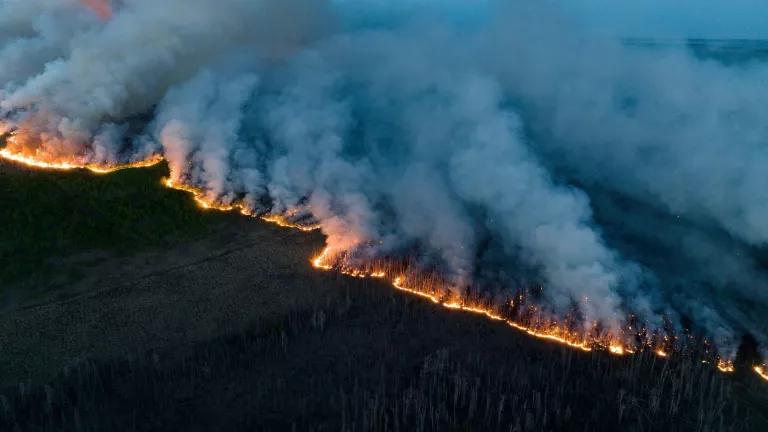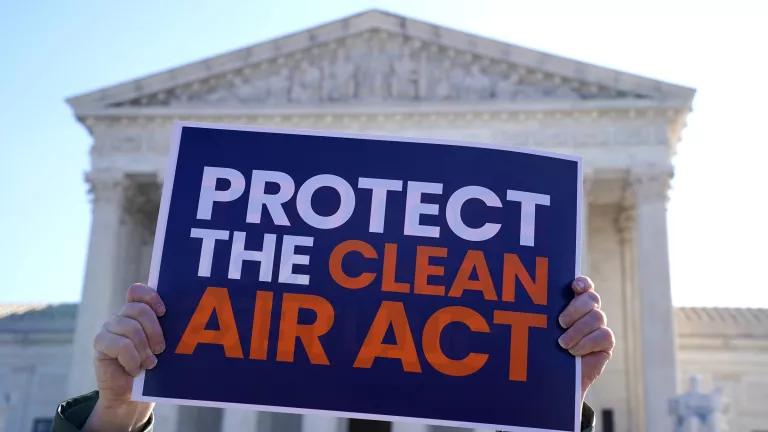Air Quality Awareness Week: What You Don't Know about the Air Quality Index CAN Hurt You
Happy Air Quality Awareness Week!
With summer (hopefully) right around the corner, and with it, summertime ozone pollution (commonly referred to as smog), it's a great time to learn a bit more about the air quality where we live, how it affects our health, and what we can do to improve it.
With that in mind, the U.S. Environmental Protection Agency has suggested air-quality related actions that citizens can take each day of Air Quality Awareness week, and today's suggested action is to "Get Outside—with the Air Quality Index!."
The Air Quality Index (AQI) is a critically important tool that allows citizens real-time access to information about whether or not the air they're breathing is safe. It's great that the Agency wants more people to use this index, but the unfortunate asterisk here is that EPA's underlying standards for ozone pollution are out-of-date and unprotective. This means that the AQI doesn't currently reflect how clean or safe your air actually is—based on what medical science tells us is harmful to our health. So, even if the AQI suggests the air is safe, and encourages you, as the EPA suggests, to "Get Outside!," you may in fact be putting your health at risk.
The way the AQI works is to assign a color and a number to a certain amount of pollution in the air—providing a quick and easy way for citizens to understand how safe their air is. For example, Green, or a number from 0 to 50, means that it's safe for everyone to be outside. Yellow, or a number from 50 to 100, means that some people that are particularly sensitive to pollution should limit their outdoor activity. And those "Code Red" smog days that we hear about on the news or read about in the paper mean that everyone should avoid spending too much time outside, since the air is considered unhealthy.
The Clean Air Act requires that EPA set a national health standard for ozone pollution that is "requisite to protect public health" with an adequate safety margin. That standard is keyed to the color Yellow, and the number 100, on the Air Quality Index. But the clear science on smog pollution shows that EPA's 7-year-old standard, currently set at 75 parts per billion (ppb), is too weak and fails to protect Americans from the adverse health impacts of smog pollution. These include: respiratory problems, cardiovascular problems, developmental and reproductive problems, and even premature death. In fact, EPA's independent science and medical advisors found that even a standard set at 70 ppb "may not meet the statutory requirement to protect public health with an adequate margin of safety." Those same advisors pointed out that "60 ppb would certainly offer more public health protection than levels of 70 ppb or 65 ppb and would provide an adequate margin of safety" when analyzing where EPA should set safer standards.
But most Americans across the country probably do not know that our current ozone standards fail to adequately protect the public. Americans continue to rely on the AQI's color-coded ranges to determine if it's safe to let their kids play in the yard, or walk to the grocery store or exercise outdoors. Until EPA updates its standards for smog pollution, which it has proposed to do this fall, the AQI is misleading the public, and conveying that the air in your neighborhood is safe to breathe, when in fact it may not be.
And this isn't a problem that just affects a small segment of the population. The American Lung Association's just-released State of the Air Report finds that almost 44% of Americans "live where pollution levels are too often dangerous to breathe." And that finding is tied to air pollution levels linked to the outdated 75 ppb standard, which medical science and independent scientists and EPA indicate is not protective.
So, for those of us living in parts of the country where smog pollution regularly makes the air too dangerous to breathe, it's critical that we have a national health standard for smog and an AQI that accurately reflects the risks we face every day just by stepping outside. Our current AQI reading might say it's a "Yellow" risk day, when an updated health standard, based on the best science would classify air quality more correctly as a "Red" risk day. We won't have an AQI that accurately reflects these risks until we have updated ozone standards that adequately protect the American public.
We've made plenty of progress cleaning up smog so far. ALA's State of the Air report found that 13 of the 25 most smog-polluted cities had fewer high-smog days from 2011 to 2013 than they did from 2010 to 2012 (page 5). But without updated standards for smog pollution based on sound science and the best health data, tools like the AQI will not present Americans with an accurate, science-based answer to whether the air is safe to breathe.



